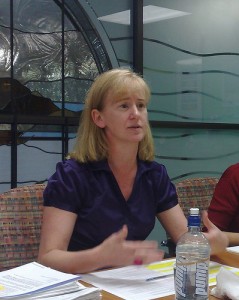 If you practice lean management, you can rattle off the original seven wastes, described by Taiichi Ohno, at a moment's notice.
If you practice lean management, you can rattle off the original seven wastes, described by Taiichi Ohno, at a moment's notice.
In fact, you likely know of at least two additional wastes you would add to the master list.
But what about colleagues unfamiliar with lean management?
If lean managers are a minority when decisions are made within your organization, it may be difficult to argue against these wastes, also known as muda.
Although most people understand defects are wasteful, they may not understand exactly how much productivity is affected by a small increase in defects.
Similarly, knowing that overproduction is less than ideal does not equate to comprehensive understanding of its supply chain effects.
The following suggestions will help you demonstrate or explain muda to colleagues who have not yet "bought in" to lean manufacturing.
Run the Numbers
Do not simply state that defects waste time and money—find out how much and communicate that information.
If the defective product is caught in testing, how much time was spent to locate it?
How much to dispose of it? How much to check equipment for problems?
If it was shipped and purchased, how much was a customer service representative paid to manage the return process?
How much was spent shipping a replacement?
Present a dollar figure per defect, and compare it to the cost of reducing defect rates.
This same technique can be applied to most muda. Transportation, for instance, has a fixed cost. With gasoline prices high, these costs may justify merging production steps to reduce transit, even if this change comes at a high price.
Learn through Lean Management Movement
Studies show many people (and domestic animals) learn most readily while their bodies are moving. Hence, the best way to teach leaders about unnecessary movement may well be to ask them to experience it.
For instance, if a colleague in a meeting questions the importance of movement waste, ask him to place his pen on the floor for the rest of the meeting and pick it up anew each time he would like to make a note. At the end of the meeting, has he taken notes productively? Doe he feel discouraged by having to bend and reach for a pen multiple times? Is his back sore?
Learn from Experience
Waiting, too, can be demonstrated with meetings. Track how much time you spend waiting to meet if someone has forgotten to reserve a conference room and no space is immediately available. Compare it to time spent on wasteful waiting in other areas of the organization.
Just-in-time production and transport muda are demonstrable with coffee. Going out for an espresso drink takes longer than it would to make a latte in the office, right? Although the coffee shop experience is valued for offering a break from work, transport waste is less desirable in the manufacturing process. Which parts or materials are you "going to Starbucks" for that could be made in-house?
What other tips do you have for explaining the seven deadly wastes to someone not familiar with lean management?
